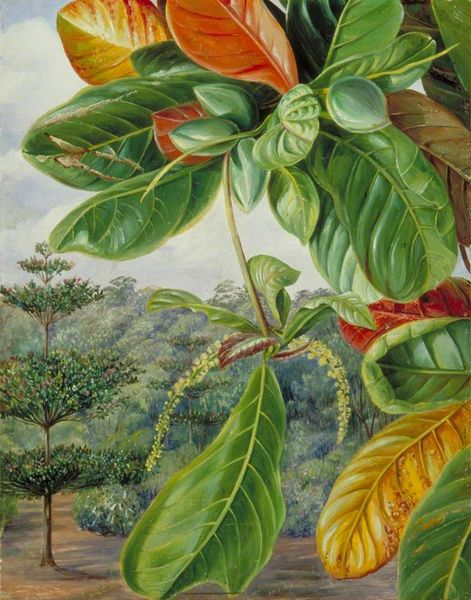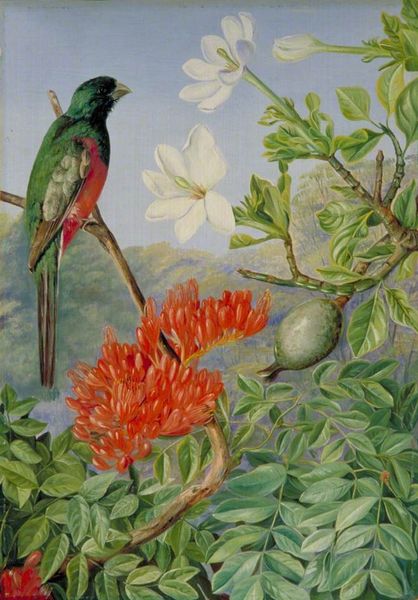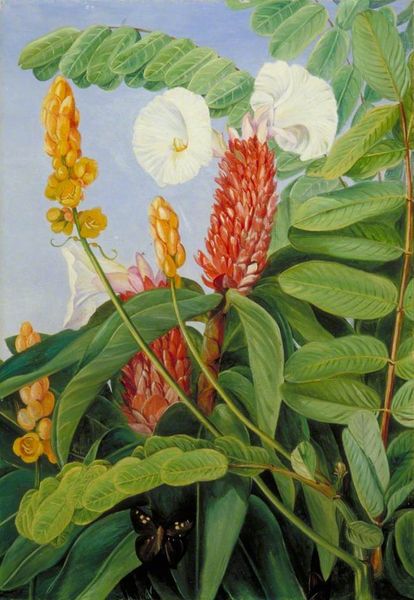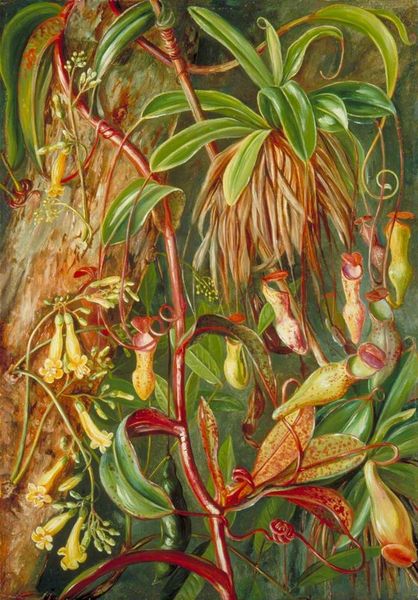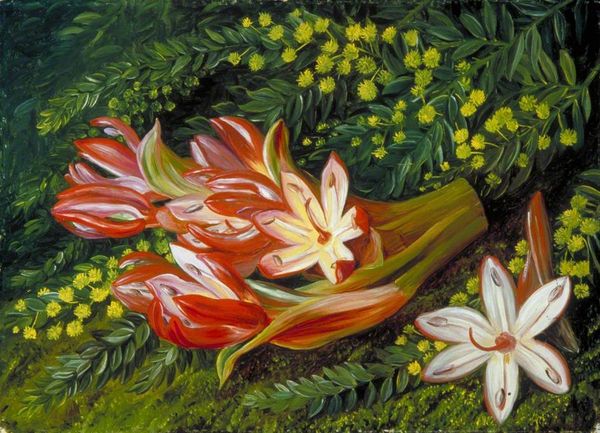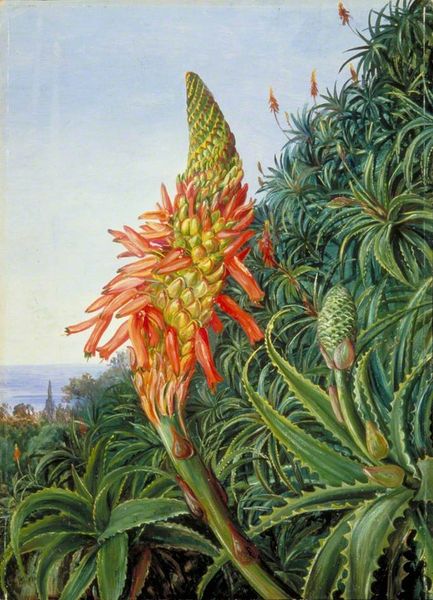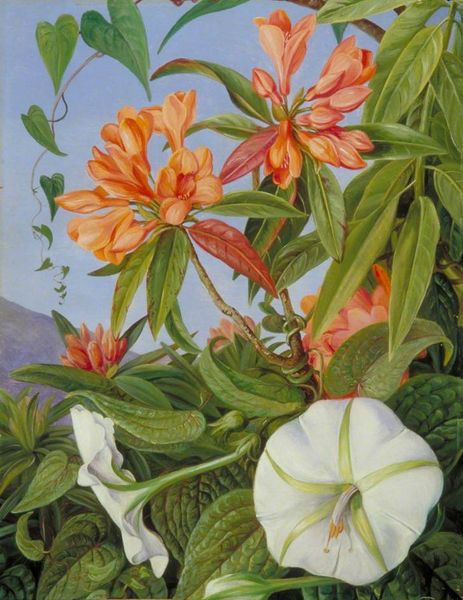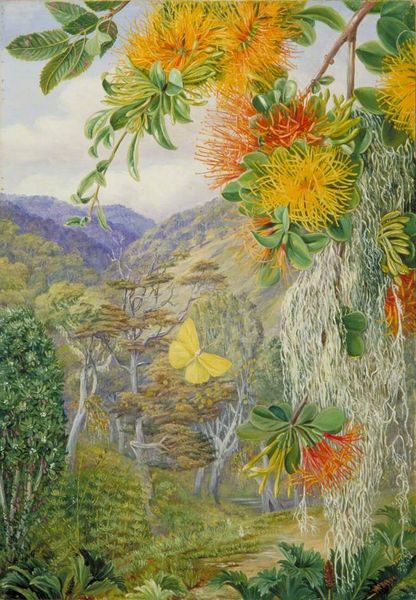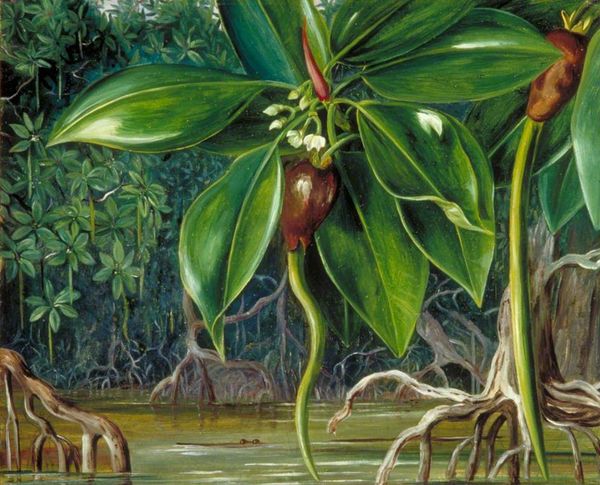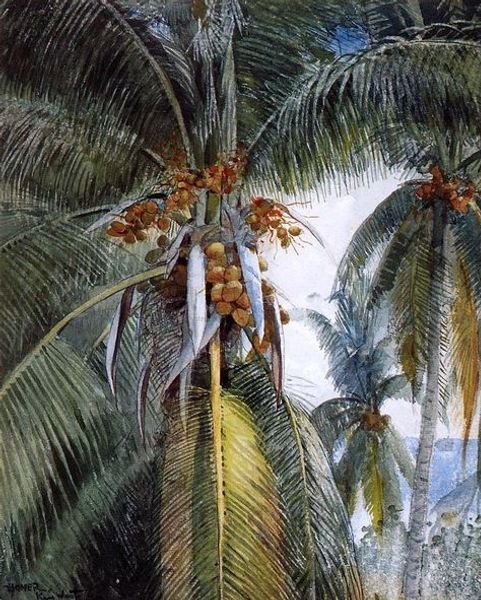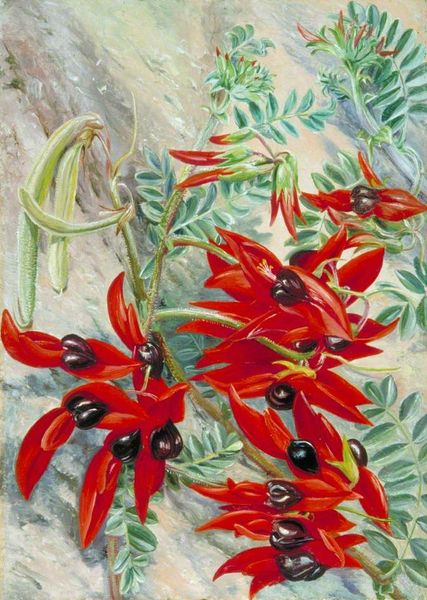
painting, plein-air, oil-paint
#
tropical
#
painting
#
impressionism
#
plein-air
#
oil-paint
#
landscape
#
flower
#
impressionist landscape
#
oil painting
#
plant
#
botany
Copyright: Public domain
Editor: So, this is "Banana, American Aloe and Cypress in a Garden, Java," painted in 1876 by Marianne North. It's an oil painting, and I’m immediately drawn to how vibrant and almost aggressively tropical it feels. What’s your read on this piece? Curator: The painting offers a fascinating glimpse into the intersection of art, science, and empire in the late 19th century. North, as a privileged Victorian woman, travelled extensively, documenting the flora of the world at a time when colonial powers were intensely interested in natural resources and botanical knowledge. Her choice to paint en plein air also reflects shifting artistic trends towards direct engagement with the landscape. What do you think that choice might tell us about her artistic intent, especially given her social position? Editor: Well, plein air suggests she wanted to capture the “real” Java, unfiltered. But knowing it’s through the lens of a British woman…did that influence how the public saw these places? Curator: Absolutely. North’s paintings, displayed in her gallery at Kew Gardens, undoubtedly shaped British perceptions of tropical landscapes and the "exotic." These images presented a curated version of nature, reinforcing colonial narratives of exploration and dominion. The very act of framing this landscape – the banana, the aloe, the cypress - as an aesthetic object implicitly asserts a form of control. Do you see any specific details in the painting that support or challenge that idea? Editor: Hmmm, the central flower feels a bit like a specimen under glass, presented for observation, yet vibrant and powerful in its own right. I guess it’s a complicated mix of appreciation and… appropriation? Curator: Precisely. And recognizing that tension is key to understanding the painting's place within the broader history of colonialism and visual culture. We must ask ourselves: Whose vision of "Java" are we seeing? What purposes did that vision serve, both then and now? Editor: I never thought about landscape paintings this way. It’s made me rethink what “natural” really means when art is involved. Curator: That’s the point. Art isn't just a mirror to the world, it’s a social and political force that actively shapes our understanding of it.
Comments
No comments
Be the first to comment and join the conversation on the ultimate creative platform.

